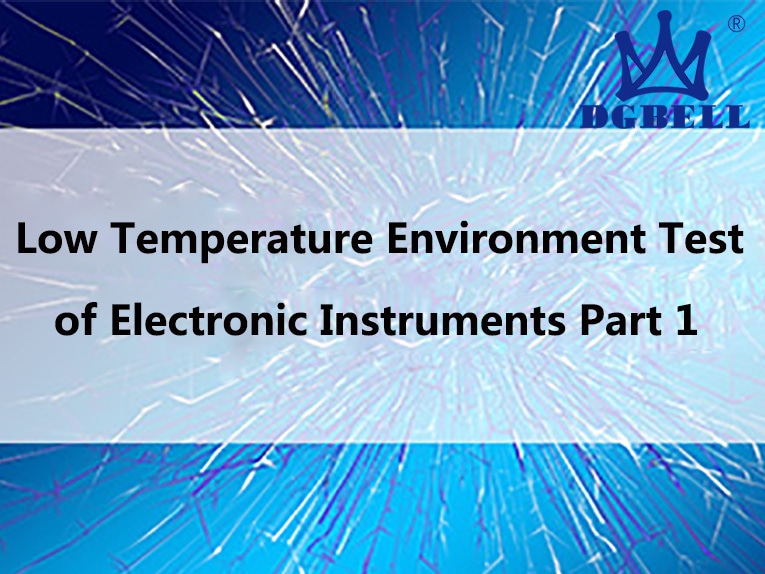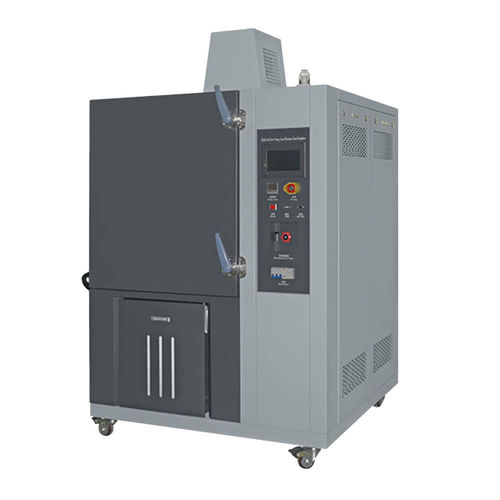
#Industry News
Low Temperature Environment Test of Electronic Instruments – Part 1
At present, electronic instruments are used in military, civil and high-tech fields.
However, the low temperature environment exists in most of its service environments. Therefore, the adaptability of electronic instruments at low temperature is directly related to their quality. Based on this, this paper analyzes the low temperature environmental effects and low temperature test technology related to electronic instruments in detail.
1.Overview of Low Temperature Environment
As a common natural environmental condition, low-temperature environment is often caused by the change of geographical latitude, altitude, season, day and night, and the work of other refrigeration equipment. In the process of developing electronic products, in order to meet the needs of low-temperature storage and work, China is currently planning and building a relatively large-scale low-temperature environment laboratory. Some existing low-temperature laboratories are also facing problems such as equipment upgrading and technical transformation. To simulate the low-temperature environment, this technology is facing the challenge of technological development and new development opportunities. The research on the adaptability of some other industrial products to the low-temperature environment is becoming more and more extensive and in-depth.
2.Low Temperature Environmental Effect Analysis
2.1 Adverse effects on metal materials of electronic instruments
In ordinary electronic instruments, the strength of steel and other metal materials will decrease under the low temperature environment, and the material is easy to become brittle, especially the ability to resist impact load will decline to a certain extent. If the electronic instruments are under the low temperature environment, they are very easy to fracture. Different materials of electronic instruments have different low temperature embrittlement temperatures. When the electronic instrument is at low temperature, most of the brittle failure usually occurs in the adjacent welding area or in the welding area, which is caused by the cracks in the welding area. Therefore, the staff should pay special attention to the problem of low-temperature embrittlement in the welding area of metal materials of electronic instruments. Low temperature embrittlement shall also be specially considered for the design and development of mechanical products in severe cold regions and vehicles working in severe cold regions.
2.2 Adverse effects on non-metallic materials of electronic instruments
The plastic, rubber and other non-metallic products of electronic instruments will harden, crack and embrittle in the low temperature environment, and the strength will decline to a certain extent, and will lose the original elasticity, which will weaken the sealing of electronic instruments and the demand reduction function of rubber, or even fail. The position of the plastic under stress and its easy fracture. For example, the electronic instrument used in low temperature environment is easy to fall off due to the embrittlement and fracture of the plastic structural parts after being subjected to low-level impact stress, resulting in the electronic instrument unable to be used normally.
2.3 Adverse effects on electronic components
The capacitance, resistance and other performance parameters of electronic components will change due to low temperature environment, which will then affect the functional performance of measuring instruments, automatic control systems, electrical appliances and instruments.
2.4 Cold shrinkage caused by low temperature environment
In low temperature environment, most electronic instrument materials will produce certain cold shrinkage, and the cold shrinkage of electronic instrument materials will produce the following adverse effects:
(1) The coordination between electronic instruments and machinery will change intermittently, and the relative working action of machinery will become slow, or even get stuck;
(2) The cold shrinkage of electronic instrument materials will make the relevant parts of the instrument deform or even break;
(3) The shrinkage of electronic instrument materials after precooling will have a direct impact on the test accuracy of instruments, and then affect the measurement results, and even lead to safety accidents.
2.5 Freezing and condensation problems
In low temperature environment, electronic instruments may cause condensation and water vapor freezing, which will then have the following adverse effects:
(1) In low temperature environment, water vapor will form fog on the lens surface of optical instruments, which will affect their optical performance;
(2) In the low temperature environment, if water vapor condenses on the insulator of the power supply circuit and the circuit board of the electronic instrument, it will cause leakage or short circuit accidents, which will affect the normal use in light cases and cause safety accidents in serious cases;
(3) In the low temperature environment, if the interior of the moving parts is frozen due to water vapor, the action of the moving mechanical structure will stop and the function will fail.
3.Low Temperature Environment Test Technology
3.1 Test requirements
The main contents of the low-temperature test research of electronic instruments include the research on some characteristics of some electronic components in the low-temperature environment, the research on some measuring instruments with low-temperature service environment requirements, and the research on some performances of some electronic instruments in the low-temperature environment. Generally, the adaptability of such instruments to low temperature environment ranges from 10 ℃ to 40 ℃
3.2 Test purpose
The purpose of the test is to verify the adaptability of electronic instruments to temperature within a certain range.
(1)Generally, the storage temperature range is -40 ℃ ~60 ℃;
(2) Generally, the limit operating temperature range is -10 ℃ ~50 ℃;
(3) Usually. The rated service temperature range is 0 ℃ ~40 ℃.







